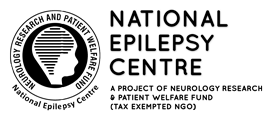Special Considerations are Paramount
Women with epilepsy need extra considerations in epilepsy management due to effects of female hormones during puberty, reproductive age and menopause on seizures.
Female Hormones & Seizures
Seizure activity can be affected due to female hormonal changes, during puberty, menstrual cycle, ovulation and menopause. Oestrogen stimulates the brain cells resulting in a higher risk of seizures. Hence,
-
Some women are likely to have seizure onset at puberty due to hormonal shift.
-
Some may have seizures around or during menstrual cycles, termed catamenial epilepsy.
-
Some may experience an increase, decrease or no change in seizure activity during pregnancy, due to hormonal change and/or medications.
-
Peri-and post-menopausal decrease in oestrogen levels occurs. This does not necessitate a decrease in seizures. Rather occasionally they may experience worsening seizures.
Contraception & Pregnancy
A woman with epilepsy can have a healthy normal baby. For a healthy pregnancy, it is strongly recommended that the pregnancy must be planned.One must visit the neurologist for review of treatment as some ASMs like sodium valproate can cause foetal anomalies and thus switching to a safer drug is required. Likewise, oral contraceptives decrease the efficacy of lamotrigine and dose adjustment may be required.
Also, the gynaecologist/obstetrician should be consulted for contraception advice as the impact of hormonal contraception may vary among women. A number of ASMs decrease the efficacy of hormonal contraceptive methods and become less reliable increasing risk of an unplanned pregnancy. Some hormonal contraceptives decrease the efficacy of some ASMs.
During pregnancy, women generally do not experience an increase in seizures. However, excessive increase in body weight, alteration in hormonal levels, metabolism and sleeping habits, stress and poor absorption of medicines may lower the efficacy of ASMs and seizure threshold. It is very important to have the best possible seizure control, and be on the safest ASM prior to becoming pregnant. Folic acid should be taken when planning and during pregnancy as this can reduce the risk of some congenital abnormalities.
It must be stressed that during pregnancy, it is very important not to stop taking or altering the dose of ASMs without the guidance of the treating specialist. To manage any risks associated with your pregnancy it is advised to:
-
Regularly visit one’s neurologist and obstetrician throughout pregnancy.
-
Continue taking folic acid as prescribed.
-
Report any changes in seizure control.

